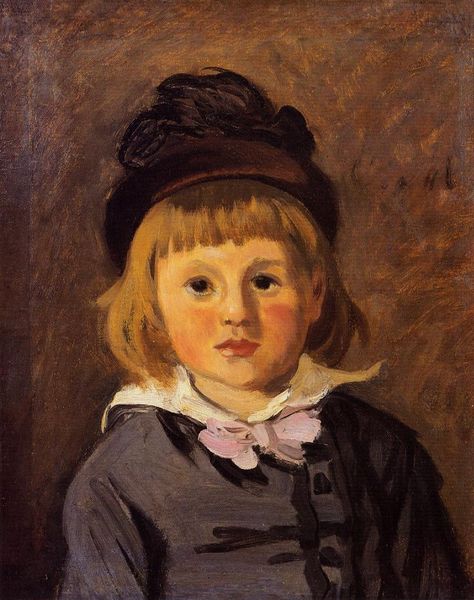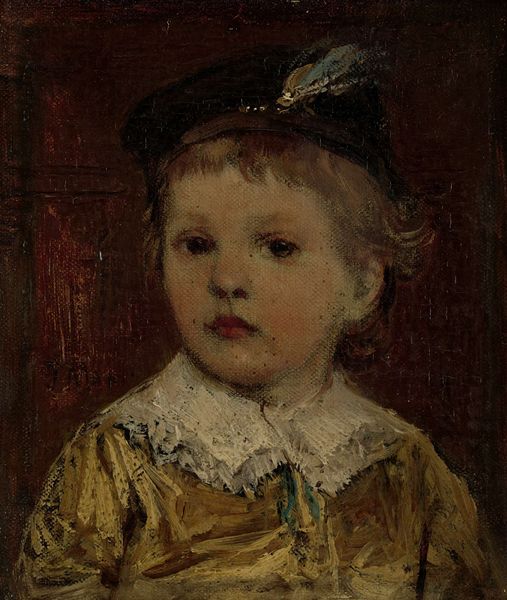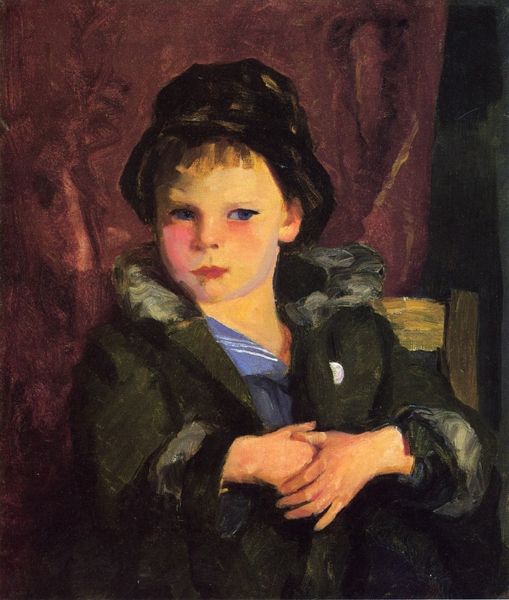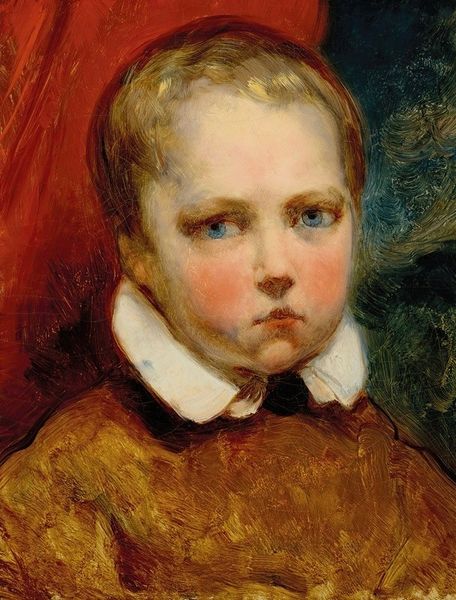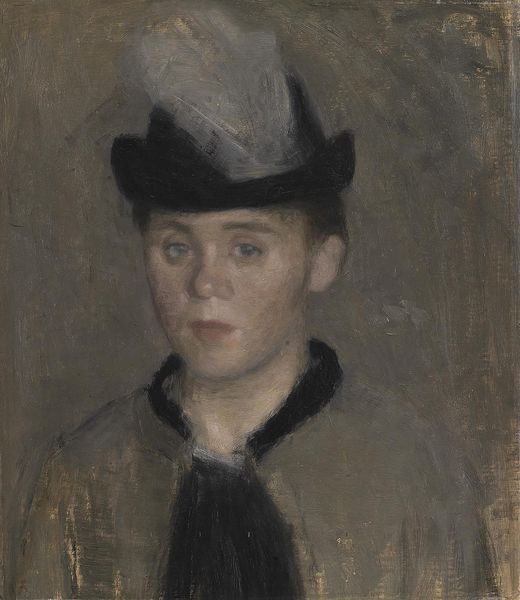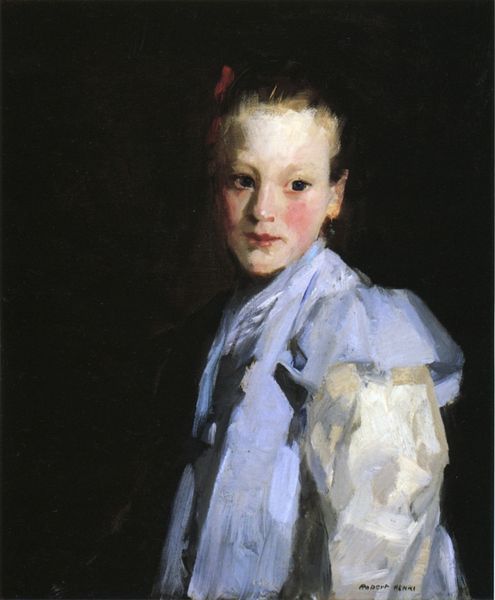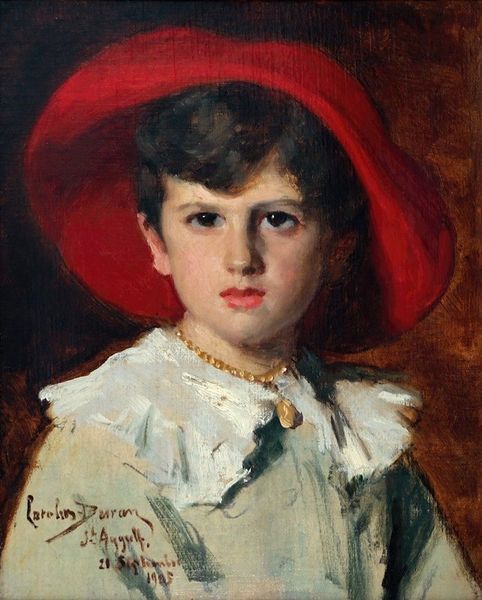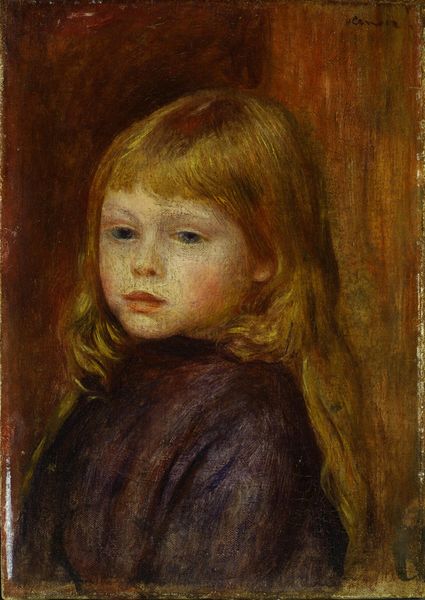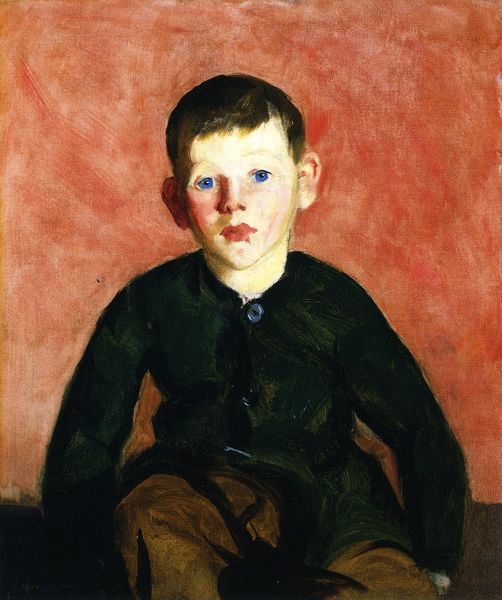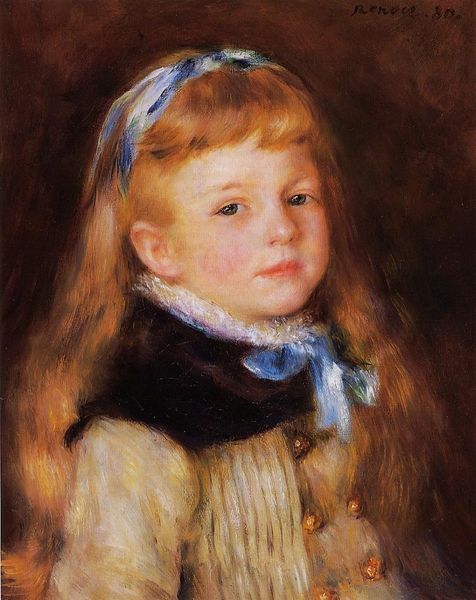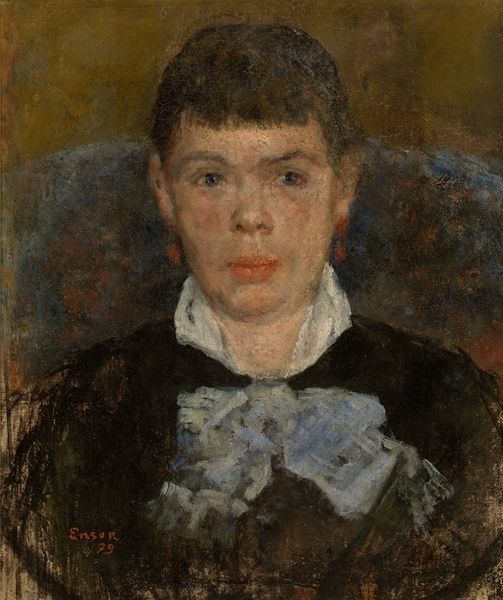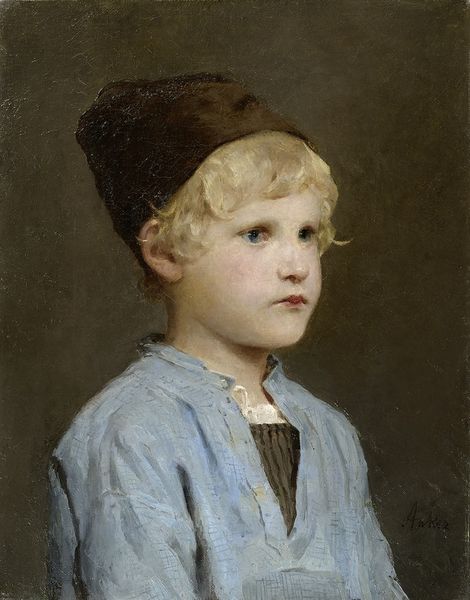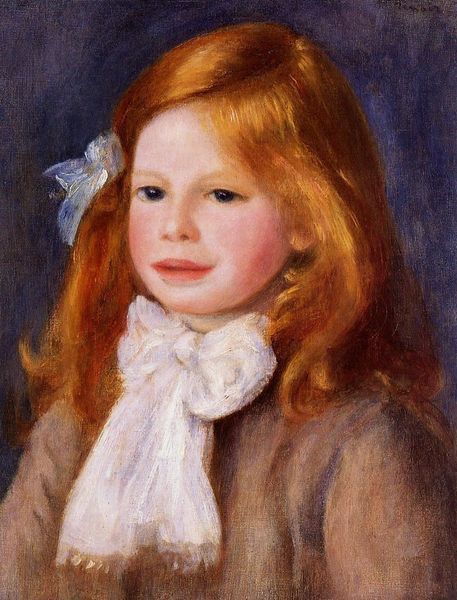
painting, oil-paint
#
portrait
#
figurative
#
painting
#
impressionism
#
oil-paint
#
genre-painting
#
academic-art
Copyright: Public Domain: Artvee
Editor: Here we have Carolus-Duran’s 1871 oil painting, *Portrait De Louis Ghémar L’aîné*. It's quite charming, but the boy seems so formally dressed. What is your take on this portrait? Curator: This work really highlights the evolving role of portraiture in the late 19th century. The Ghémar family were prominent photographers; it’s interesting to consider how Carolus-Duran, a leading portrait painter, positions his work in relation to the rise of photography. Notice the painterly brushstrokes, a distinctly Impressionistic choice. Editor: Yes, that definitely stands out, especially considering it’s a portrait of a child! Curator: Precisely! By employing Impressionistic techniques, Carolus-Duran emphasizes the act of painting itself. In a way, he asserts the value and unique vision of the artist in a world increasingly captivated by photographic realism. We might also ask about the implied class dynamics at play. Who was being painted at this time, and who was taking the pictures? How were the functions of these images distinct and how were they the same? Editor: That’s a great point, making me think about art patronage too. He is both capturing and constructing an image. Curator: Exactly. Portraits like this also helped to shape cultural ideals of childhood. How did societies define and represent childhood through visual culture during this period? Editor: Fascinating! I see how it's all interconnected now, painting, photography, and even social status! Curator: Indeed! Art isn't made in a vacuum. By studying the cultural context, we gain a deeper appreciation for the historical importance of this, and other, seemingly simple portrait.
Comments
No comments
Be the first to comment and join the conversation on the ultimate creative platform.
